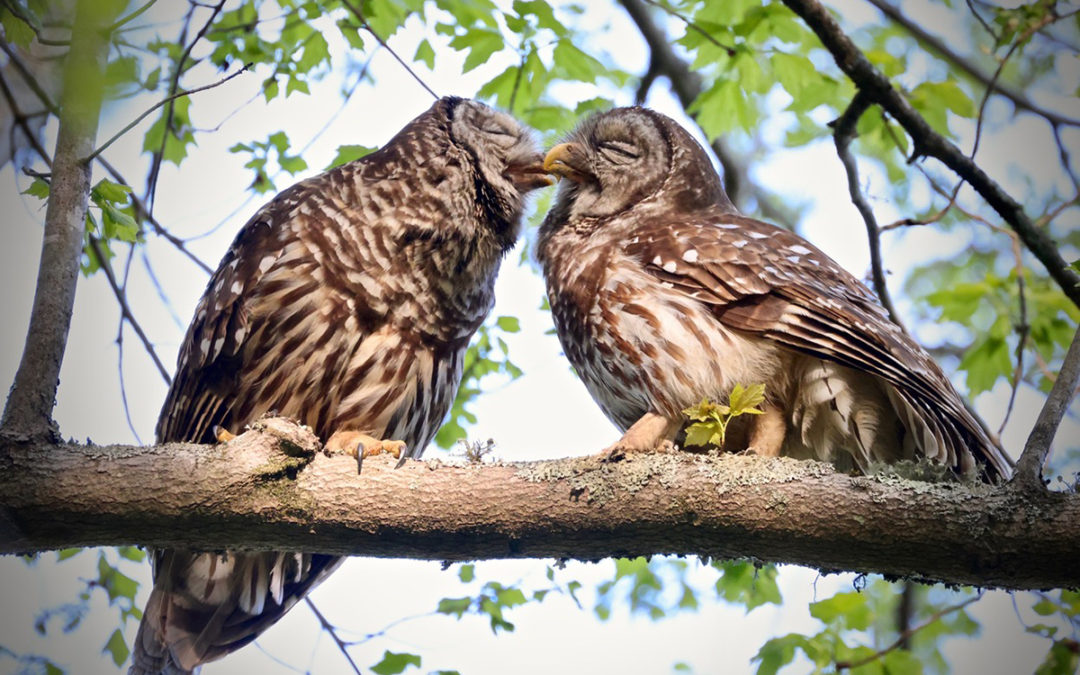Bolin Creek in Carrboro has many places where the riparian vegetated edge of the creek is intact. This zone is vital to our wildlife. When you remove that riparian buffer, the nature of the creek changes. The Barred Owls in the photo are a mated pair who have raised many owlets in the past years. This year they successfully fledged two healthy owlets. The nest was located within that riparian border of trees, and surrounded by low vegetation. The nest itself was only ten yards from the creek itself. If that riparian is removed, the Owls won’t die. They are married to the territory, but they will have a smaller area to hunt for snakes and amphibians. There will be less available food sources.
When the owls have less food readily available, the female may not have the stores necessary to produce eggs, so in response, she might produce one egg in the next year. This applies to all wildlife in the riparian zone. Summer nesting Hooded Warblers rely on that border for nesting sites, and these tiny warblers consume thousands of caterpillars and invertebrates to feed their nestlings.
{Carrboro’s proposal to put pavement next to the creek will reduce habitat.} If habitat is reduced, there are fewer territories for the warblers, and less to eat within that territory. Habitat destruction has a slow effect on all wildlife, from the top predators on down the food chain to our creek invertebrates. Fewer fish in pavement heated water (depleted of oxygen), means fewer snakes to feed the owls, and on it goes, in a cascade that reduces the wildlife in an area that was formally rich in wildlife.
The bottom line is that if we eliminate stream buffers, we lose important bird species. No buffers, no birds.
–Mary Sonis Photographer of Bolin Forest

